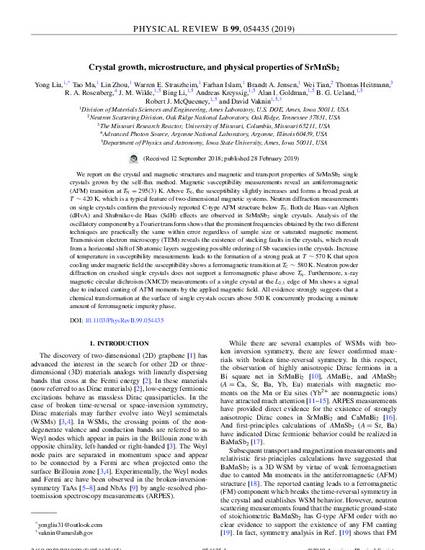
We report on the crystal and magnetic structures and magnetic and transport properties of SrMnSb2 single crystals grown by the self-flux method. Magnetic susceptibility measurements reveal an antiferromagnetic (AFM) transition at TN=295(3) K. Above TN, the susceptibility slightly increases and forms a broad peak at T∼420 K, which is a typical feature of two-dimensional magnetic systems. Neutron diffraction measurements on single crystals confirm the previously reported C-type AFM structure below TN. Both de Haas-van Alphen (dHvA) and Shubnikov-de Haas (SdH) effects are observed in SrMnSb2 single crystals. Analysis of the oscillatory component by a Fourier transform shows that the prominent frequencies obtained by the two different techniques are practically the same within error regardless of sample size or saturated magnetic moment. Transmission electron microscopy (TEM) reveals the existence of stacking faults in the crystals, which result from a horizontal shift of Sb atomic layers suggesting possible ordering of Sb vacancies in the crystals. Increase of temperature in susceptibility measurements leads to the formation of a strong peak at T∼570 K that upon cooling under magnetic field the susceptibility shows a ferromagnetic transition at TC∼580 K. Neutron powder diffraction on crushed single crystals does not support a ferromagnetic phase above TN. Furthermore, x-ray magnetic circular dichroism (XMCD) measurements of a single crystal at the L2,3 edge of Mn shows a signal due to induced canting of AFM moments by the applied magnetic field. All evidence strongly suggests that a chemical transformation at the surface of single crystals occurs above 500 K concurrently producing a minute amount of ferromagnetic impurity phase.
Available at: http://works.bepress.com/ai-goldman/45/